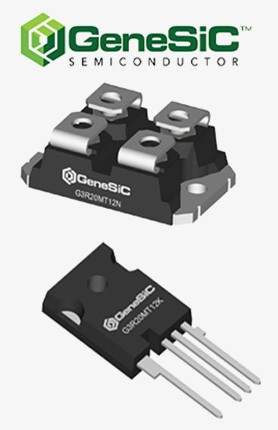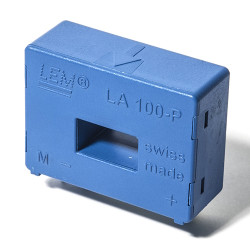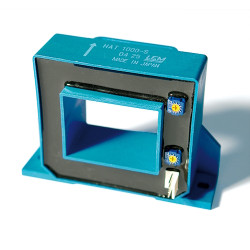-
BackX
-
Components
-
-
Category
-
Semiconductors
- Diodes
- Thyristors
-
Electro-insulated Modules
- Electro-insulated Modules | VISHAY (IR)
- Electro-insulated Modules | INFINEON (EUPEC)
- Electro-insulated Modules | Semikron
- Electro-insulated Modules | POWEREX
- Electro-insulated Modules | IXYS
- Electro-insulated Modules | POSEICO
- Electro-insulated Modules | ABB
- Electro-insulated Modules | TECHSEM
- Go to the subcategory
- Bridge Rectifiers
-
Transistors
- Transistors | GeneSiC
- SiC MOSFET Modules | Mitsubishi
- SiC MOSFET Modules | STARPOWER
- Module SiC MOSFET ABB’s
- IGBT Modules | MITSUBISHI
- Transistor Modules | MITSUBISHI
- MOSFET Modules | MITSUBISHI
- Transistor Modules | ABB
- IGBT Modules | POWEREX
- IGBT Modules | INFINEON (EUPEC)
- Silicon Carbide (SiC) semiconductor elements
- Go to the subcategory
- Gate Drivers
- Power Blocks
- Go to the subcategory
- Electrical Transducers
-
Passive components (capacitors, resistors, fuses, filters)
- Resistors
-
Fuses
- Miniature Fuses for electronic circuits - ABC & AGC Series
- Tubular Fast-acting Fuses
- Time-delay Fuse Links with GL/GG & AM characteristics
- Ultrafast Fuse Links
- Fast-acting Fuses (British & American standard)
- Fast-acting Fuses (European standard)
- Traction Fuses
- High-voltage Fuse Links
- Go to the subcategory
- Capacitors
- EMI Filters
- Supercapacitors
- Power surge protection
- TEMPEST emission revealing filters
- Surge arrester
- Go to the subcategory
-
Relays and Contactors
- Relays and Contactors - Theory
- 3-Phase AC Semiconductor Relays
- DC Semiconductor Relays
- Controllers, Control Systems and Accessories
- Soft Starters and Reversible Relays
- Electromechanical Relays
- Contactors
- Rotary Switches
-
Single-Phase AC Semiconductor Relays
- AC ONE PHASE RELAYS 1 series| D2425 | D2450
- One phase semiconductor AC relays CWA and CWD series
- One phase semiconductor AC relays CMRA and CMRD series
- One phase semiconductor AC relays - PS series
- Double and quadruple semiconductor AC relays - D24 D, TD24 Q, H12D48 D series
- One phase semiconductor relays - gn series
- Ckr series single phase solid state relays
- One phase AC semiconductor relays for DIN bus - ERDA I ERAA series
- 150A AC single phase relays
- Rail Mountable Solid State Relays With Integrated Heat Sink - ENDA, ERDA1 / ERAA1 series
- Go to the subcategory
- Single-Phase AC Semiconductor Relays for PCBs
- Interface Relays
- Go to the subcategory
- Cores and Other Inductive Components
- Heatsinks, Varistors, Thermal Protection
- Fans
- Air Conditioning, Accessories for Electrical Cabinets, Coolers
-
Batteries, Chargers, Buffer Power Supplies and Inverters
- Batteries, Chargers - Theoretical Description
- Modular Li-ion Battery Building Blocks, Custom Batteries, BMS
- Batteries
- Battery Chargers and Accessories
- Uninterruptible Power Supply and Buffer Power Supplies
- Inverters and Photovoltaic Equipments
- Energy storage
- Fuel cells
- Lithium-ion batteries
- Go to the subcategory
-
Automatics
- Spiralift Lifts
- Futaba Drone Parts
- Limit Switches, Microswitches
- Sensors, Transducers
-
Infrared Thermometers (Pyrometers)
- IR-TE Series - Water-proof Palm-sized Radiation Thermometer
- IR-TA Series - Handheld Type Radiation Thermometer
- IR-H Series - Handheld Type Radiation Thermometer
- IR-BA Series - High-speed Compact Radiation Thermometer
- IR-FA Series - Fiber Optic Radiation Thermometer
- IR-BZ Series - Compact Infrared Thermometers
- Go to the subcategory
- Counters, Time Relays, Panel Meters
- Industrial Protection Devices
- Light and Sound Signalling
- Thermographic Camera
- LED Displays
- Control Equipments
- Go to the subcategory
-
Cables, Litz wires, Conduits, Flexible connections
- Wires
- Cable feedthroughs and couplers
- Litz wires
- Cables for extreme applications
- Sleevings
-
Braids
- Flat Braids
- Round Braids
- Very Flexible Flat Braids
- Very Flexible Round Braids
- Cylindrical Cooper Braids
- Cylindrical Cooper Braids and Sleevings
- Flexible Earthing Connections
- Galvanized and Stainless Steel Cylindrical Braids
- PCV Insulated Copper Braids (temp. up to 85C)
- Flat Aluminium Braids
- Junction Set - Braids and Tubes
- Go to the subcategory
- Traction Equipment
- Cable Terminals
- Flexible Insulated Busbars
- Flexible Multilayer Busbars
- Cable Duct Systems
- Go to the subcategory
- View all categories
-
Semiconductors
-
-
- Suppliers
-
Applications
- CNC Machine Tools
- DC and AC Drives (Inverters)
- Energetics
- Energy bank
- Equipment and Components for Hazardous Areas [Ex]
- Equipment for Distribution, Control and Telecommunications Cabinets
- HVAC Automation
- Induction Heating
- Industrial Automation
- Industrial Protective Devices
- Machines for Drying and Wood Processing
- Machines for Thermoforming Plastics
- Mining, Metallurgy and Foundry
- Motors and Transformers
- Power Supplies (UPS) and Rectifier Systems
- Printing
- Temperature Measurement and Regulation
- Test and Laboratory Measurements
- Tram and Railway Traction
- Welding Machines
-
Assembly
-
-
Inductors
-
-
Induction devices
-
-
Service
-
- Contact
- Zobacz wszystkie kategorie
How LEM Current and Voltage Transducers Work

Modern energy and industrial systems require precise real-time measurement of current and voltage. LEM transducers, both current and voltage, play an important role in monitoring and controlling the flow of energy in electrical systems. They enable safe device management, network parameter control, and increased energy efficiency of systems.
Current and voltage transducers are used in many areas, from industrial automation to photovoltaic and wind systems, as well as in high-voltage and high-current power networks. Their main task is to convert current or voltage from an electrical system into a measurement signal proportional to the measured values. This allows systems to respond accurately to changes in real time, which is crucial for the safety and reliability of machines and devices.
What are current and voltage transducers?
A transducer is a measurement element that allows monitoring of current or voltage in direct and alternating current systems (DC and AC). LEM transducers operate based on various technologies, including the Hall effect method. In the case of Hall-effect transducers, current can be measured without direct contact with the conductor. Other transducers use ferromagnetic cores or isolation technologies, depending on the application.
Current transducers measure the current flowing through a conductor and convert it into an output signal proportional to the current. They are used for monitoring motor currents, controlling power in industrial systems, and in energy management devices. Voltage transducers provide information about voltage in the network or power system, allowing precise control and protection against overloads. Depending on the technology, a voltage transducer may use resistive dividers, isolation transformers, or other isolation solutions.
Types of LEM transducers
In practice, different types of transducers are distinguished depending on the application and type of current:
- DC current transducers – for measuring direct current in photovoltaic systems, energy storage, and electric vehicle charging.
- AC and DC current transducers – allow measurement of both alternating and direct current, with accuracy depending on the technology used (Hall, current transformer).
- Voltage transducers – used in power networks, automation systems, and power electronics, providing a signal proportional to voltage.
- High-current transducers – for use in galvanic and energy processes with very high currents. Only specialized models support values reaching hundreds of kiloamperes.
How do current and voltage transducers work?
The operating principle of a current transducer is based on converting the flowing current into an electrical signal proportional to its value. In systems based on the Hall effect, the current generates a magnetic flux, which is detected by a Hall sensor. The transducer then produces an output signal that can be read by automation or measurement systems.
Voltage transducers work on a similar principle, converting voltage into a proportional signal, allowing control of energy flow in real time. In both cases, it is important that the transducer is selected appropriately for the measured values and type of current in the system (AC or DC).
Applications of LEM transducers
LEM transducers are used in a wide range of industrial and energy applications:
- Industrial automation systems – monitoring currents and voltages in machines, devices, and production lines, ensuring operational safety and system reliability.
- Energy and power systems – monitoring currents in AC and DC networks, energy storage systems, wind farms, and photovoltaic plants.
- Electric vehicle charging – precise current measurement enables optimized charging and battery energy management.
- Power electronics and supply systems – transducers provide measurement signals for control and protection systems, increasing efficiency and safety of machines and devices.
- Monitoring and control systems – allow detection of anomalies, supervision of current and voltage flow, and optimization of energy consumption in real time.
Transducer parameters
When selecting a current or voltage transducer, attention should be paid to:
- Current or voltage range – to ensure the transducer can measure actual values in the system.
- Measurement accuracy – affects output signal precision and control safety.
- Electromagnetic immunity – important in industrial environments and automation systems.
- Type of output signal – proportional to the system current or voltage.
- Transducer applications – direct current, alternating current, high currents, or high voltages.
- Reliability and durability – in industrial or energy processes where operation under harsh conditions is standard.
Summary
LEM current and voltage transducers are indispensable elements in automation, energy, and power electronics systems. They enable monitoring of current and voltage flow, precise system control, and increased energy efficiency. Their use in AC and DC systems, high currents, and industrial environments ensures reliable operation of machines, devices, and power systems.
LEM transducers provide accuracy, reliability, and immunity to interference, which is crucial for the safety of devices and electronic components. Their versatility makes them suitable for industrial systems, energy management, photovoltaics, and energy storage applications.
We invite you to explore our offer – we provide a wide selection of current and voltage transducers, ideal for industrial and automation applications. See how our solutions can enhance the safety and efficiency of your systems.
Related products
Related posts
 Thermally conductive materials in power storages
Thermally conductive materials in power storages
 Measuring power and energy in electric circuits
Measuring power and energy in electric circuits
 Wentylatory przemysłowe - rodzaje, właściwości
Wentylatory przemysłowe - rodzaje, właściwości









Leave a comment